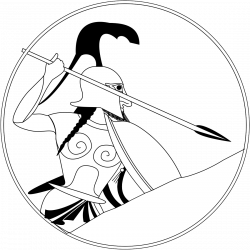Last time, we discussed the geography of Thasos and its peraea. This time, we will be having a very brief look at the history of the region, from the early years of the Early Iron Age (beginning at ca. 1100 BCE in the north-eastern Aegean) to the Early Archaic transitional phases (ca. 700-675/50 BCE), to the ‘post-colonisation’ period (or ‘post-apoikism’ period, if we may utilise the Greek term, to avoid the non-applicable connotations of the modern ‘colonial’ terminology)
The Early Iron Age (EIA)
This period is, ironically, both poorly and extensively explored in the Thasian region. On the one hand, Kastri has been explored in detail (especially the four cemeteries surrounding the acropolis), and the typological studies focusing on the pottery of the site (particularly Dr. Koukouli-Chrysanthaki’s doctoral dissertation Protohistoric Thasos: the cemeteries of the Kastri settlement) have been invaluable for dating EIA material culture elements, not just for Thasos, but for the entirety of eastern Macedonia and coastal Thrace. On the other hand, Kastri is the only site in the Thasian region where EIA stratigraphy has been explored and published thoroughly. This means that the Early Iron Age remains a relatively ‘Dark’ Age for Thasos and its peraea as a whole. Continue reading “Thasos, the Gulf of Kavala and the Greek Colonisation (Part 2)”

